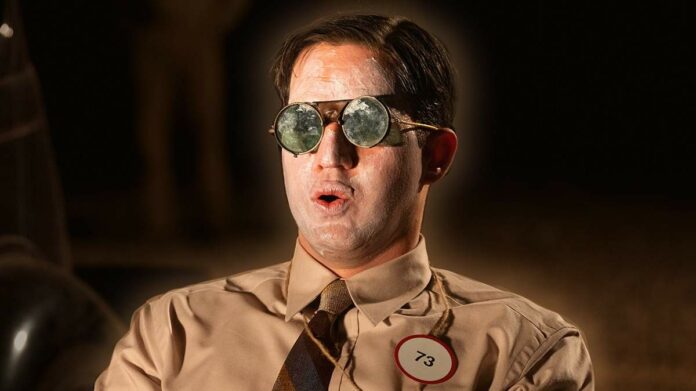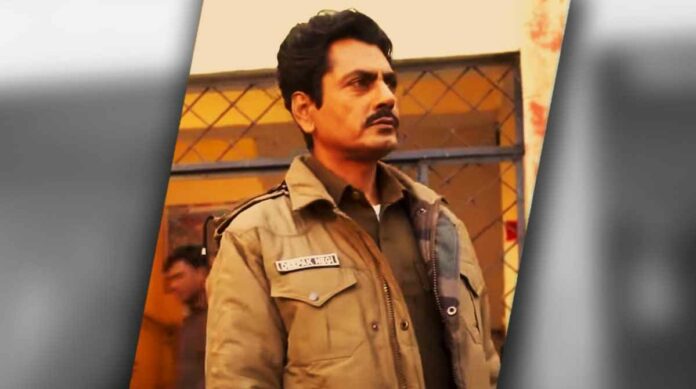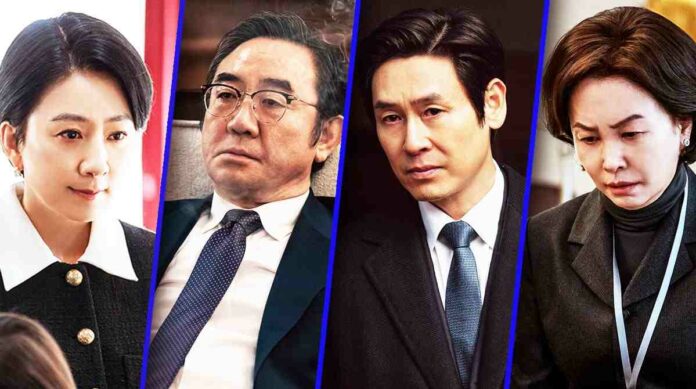Edward Teller and J. Robert Oppenheimer, two renowned scientists who shared a common vision for atomic research, found themselves at odds due to their differing ethical concerns. Among the annals of scientific feuds, such as the disagreements between Einstein and Bohr or Dawkins and Gould, the clash between Oppenheimer, the father of the atomic bomb, and Edward Teller, known as the father of the Hydrogen bomb, played a significant role in shaping the course of history.
In Christopher Nolan’s masterpiece, Oppenheimer, which needs no further explanation about its grand portrayal of the consequences of the atomic explosion in Oppenheimer’s life, we are exposed to the intricate relationship between Hungarian physicist Edward Teller and Robert J. Oppenheimer. Although Nolan didn’t grant Edward Teller’s character (played by Benny Safdie) extensive screen time to fully portray the conflicting relationship, he skillfully alluded to their differences of opinion, which later resulted in severe consequences for Oppenheimer.
How Did Edward Teller Meet Oppenheimer?
Robert Oppenheimer had realized quite early in life that practical physics wasn’t his cup of tea, and thus, on a professor’s suggestion, he attended the prestigious University of Göttingen, where he earned a doctorate degree in theoretical physics. He returned to his home country, i.e., America, soon after in order to teach physics to his own countrymen. He finally became a professor of physics at the University of California, Berkeley. Initially, few students attended his class, but as word of his efficiency spread on campus, more and more students started attending his lectures.
During his time in Berkeley, Oppenheimer was drawn to explore the realm of quantum physics, an area that only a few individuals were interested in or aware of. Through his pioneering work in scientific exploration, particularly in quantum physics and atomic research, Oppenheimer emerged as a figure who had the potential to alter America’s destiny.
The backdrop was the era of World War II, when Einstein informed President Roosevelt that Germany was researching the potential of Uranium to produce vast energy through fission chain reaction. Suspicions arose that the Nazis might be planning to build an atomic bomb. Consequently, preparations began, led by Leslie Groves, who was tasked with recruiting brilliant scientists to build an atomic bomb before the Nazis could achieve it.
The location for this top-secret project, known as the Manhattan Project, was Los Alamos, New Mexico, where a roster of top scientists was assembled. Among them, Edward Teller, a Hungarian-American physicist, received an invitation to join the mission. Both Edward Teller and Robert Oppenheimer shared a profound interest in atomic studies and sought to apply their knowledge to create something of immense importance for the National security of the United States. While they shared the same goal, their approaches differed. Despite being inspired and attracted by Oppenheimer’s relentless research and profound understanding of quantum physics and nuclear reactions, Teller aimed to conceive something even more powerful than an atomic bomb.
Why Did Teller Want To Build A Hydrogen Bomb?
Edward Teller, like Oppenheimer, was fully devoted to the project, but he had an even more ambitious goal in mind: creating a bomb that would be even more powerful than the fission-powered atomic bomb the team at Los Alamos was building. He met with an Italian-American physicist named Enrico Fermi, who gave him some advice that was going to change his life forever. Though hesitant at first, Teller finally explored Fermi’s scientific suggestion and used both nuclear fission and nuclear fusion reaction techniques to build a thermonuclear bomb, or hydrogen bomb, which could be an incredibly powerful and devastating weapon against enemies.
The hydrogen bomb operates on the principle of nuclear fusion, where hydrogen isotopes combine to release an enormous amount of energy. However, developing such a bomb was a highly complex process. Teller’s dedication to his ideas sometimes caused him to lose focus on the atomic bomb development in Los Alamos. In Oppenheimer, Teller’s confidence about his invention and his arrogance were portrayed through a pivotal scene when other scientists taunted him for not contributing effectively, but Teller arrogantly considered walking away from the mission altogether. However, Oppenheimer, being an inspiring leader, approached Teller and offered to discuss the invention with him in the lab. Recognizing the value of brilliant minds like Teller’s, Oppenheimer was determined to keep all his scientists engaged in the project and avoid any sense of discouragement among them.
Did Teller And Oppenheimer Reconcile Ever?
Edward Teller fled Europe during the rise of Nazi Germany and understood the grave threat of totalitarian regimes. He also saw the danger of a nuclear-armed Soviet Union in 1949. Teller firmly believed in the need for a strong U.S. nuclear deterrent to protect the nation and its allies from possible aggression. But Robert J. Oppenheimer had serious reservations about the development of another nuclear weapon that was more destructive than an atom bomb.
Nolan’s Oppenheimer went beyond just depicting an explosion and explored its aftermath, which deeply scarred Oppenheimer’s psyche. The millions of civilian deaths in Hiroshima and Nagasaki left him traumatized, leading him to oppose further research and development of such destructive weapons as the Hydrogen bomb. Witnessing Japan on the verge of surrender after the massive explosion changed Oppenheimer’s perspective on the implementation of atomic bombs and their impact on humanity. He became fearful of the immense destructive power of a thermonuclear bomb and the potential risks to global security.
However, as Oppenheimer voiced his strong and ethical opposition to the development of the H-Bomb, he found himself becoming an enemy in the eyes of the U.S. Government. His loyalty as a citizen was questioned due to his communist associations and left-wing ideology, leading him to lose his security clearance.
The film revealed the chairperson of AEC, Lewis Strauss’s role in harassing Oppenheimer out of personal vindictiveness. Strauss believed that Oppenheimer had influenced scientists, including Einstein, against him. Thus, in the 1954 hearing, Oppenheimer’s eligibility for security clearance was brought under scrutiny. Strauss made considerable efforts to gather scientists who had previously disagreed with Oppenheimer’s ideas. During this hearing, Edward Teller testified against Oppenheimer, revealing their disagreements on certain issues and expressing confusion over Oppenheimer’s actions, making his testimony controversial.
The testimony further fueled the animosity between Oppenheimer and Teller, significantly impacting the trial’s outcome. However, fellow scientists like Isidor Rabi remained loyal to Robert, providing testimony in favor of his loyalty to the United States alongside Katherine (Robert’s wife). Although Robert’s security clearance wasn’t reinstated due to past associations with communists, including his own brother Frank, the doubts about Oppenheimer’s loyalty and credibility as a U.S. citizen were dispelled, and he was declared a loyal citizen.
Katherine, also known as Kitty, struggled to forgive those who testified against her husband, but Robert chose not to hold grudges against them. In the film’s climax, Nolan depicted a powerful scene where the two men showed the world that, despite their disagreements and betrayals, they held mutual respect for each other’s work. In 1963, at the White House, when Oppenheimer received the prestigious Fermi award, Edward Teller shook hands with him, while Katherine gave Teller a cold look, refusing to shake hands with the man who had betrayed her husband, resulting in both of them losing their security clearances.
Christopher Nolan’s Oppenheimer stands out as one of the masterpieces in his oeuvre and there are numerous reasons to consider it his magnum opus. One of these reasons is Nolan’s skillful depiction of the dispute between these scientific luminaries, both immensely brilliant in their fields. In a non-violent and compelling manner, Nolan portrayed Oppenheimer as a forgiving character who maintained respect for Teller’s pioneering perspectives and contributions to atomic research, even though Teller presented his statement against Oppenheimer in the trial.







